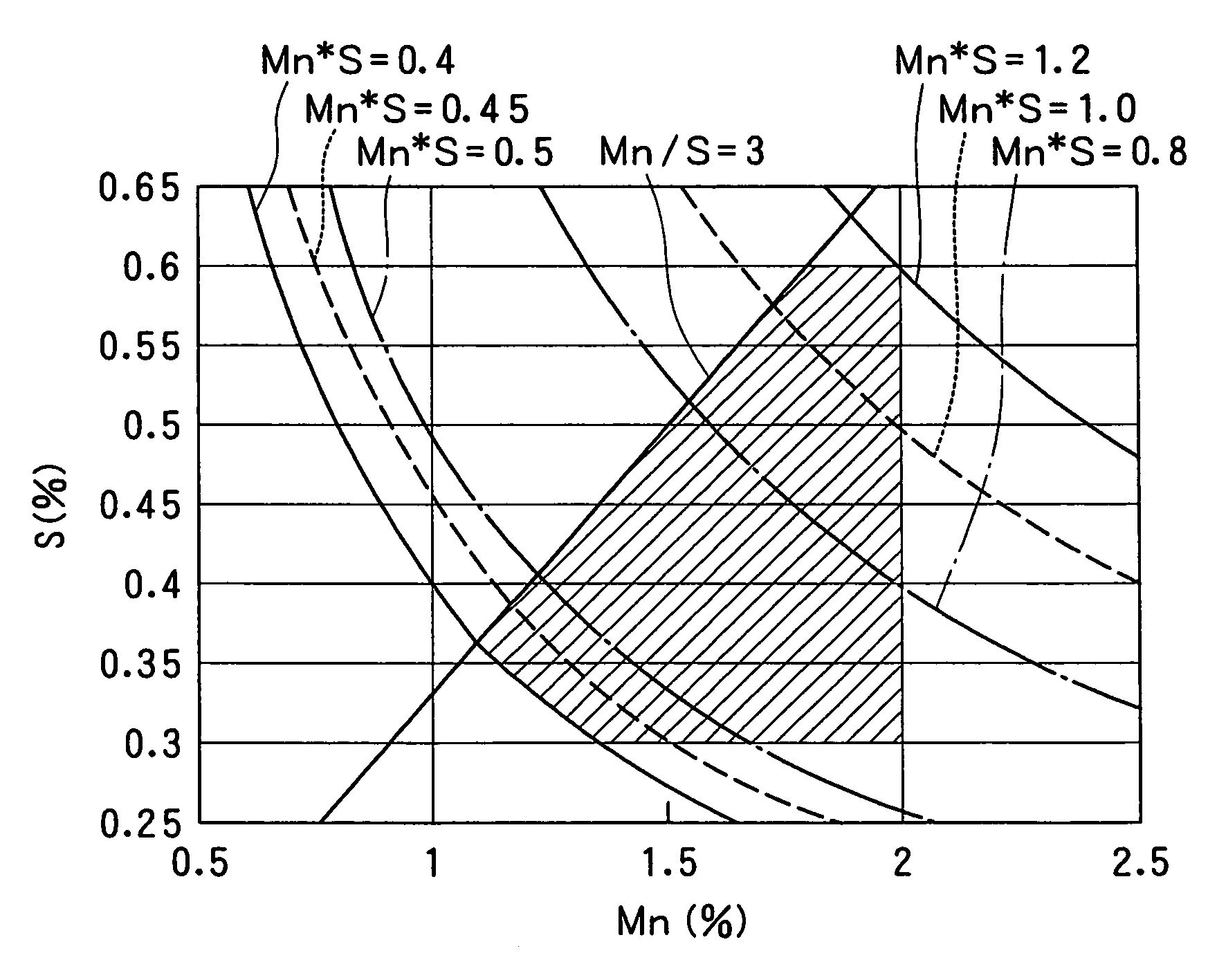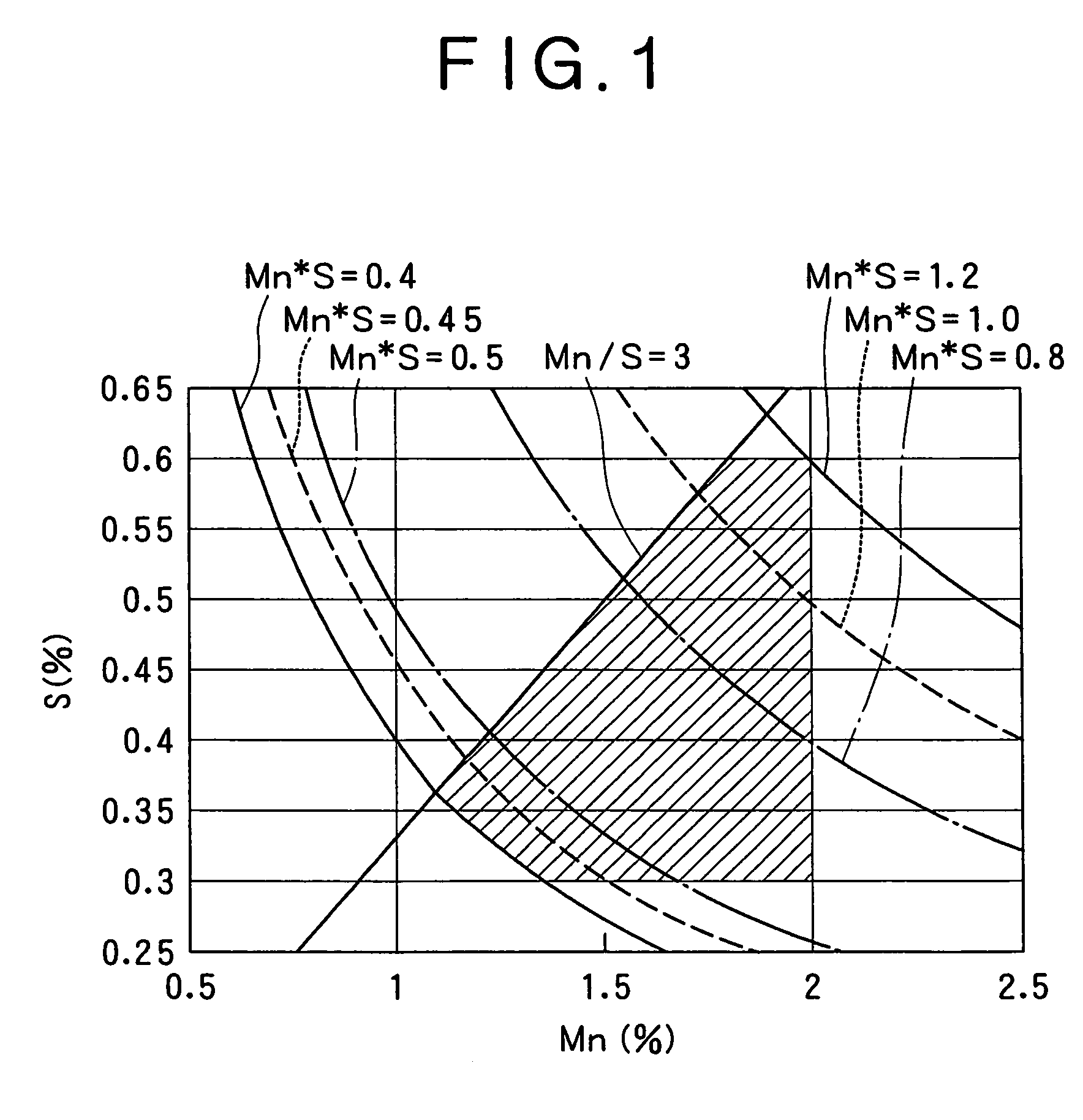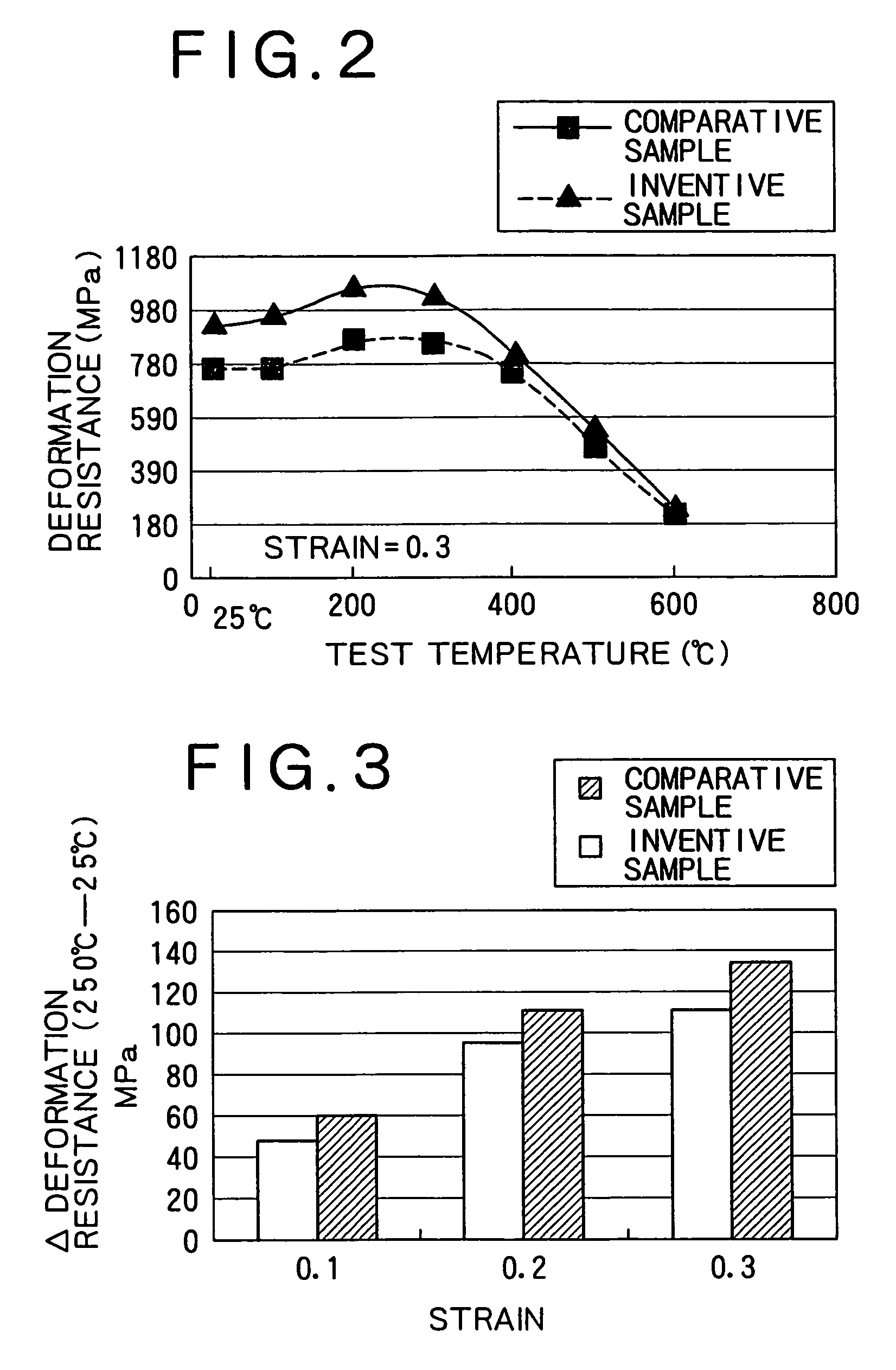Low carbon composite free-cutting steel product excellent in roughness of finished surface and method for production thereof
a free-cutting, low-carbon technology, applied in the field of low-carbon resulfurized free-cutting steel products, can solve the problems of deteriorating health, deteriorating hot workability, and requiring reduction, so as to prolong the life of the tool, improve the initial roughness of the finished surface of the work material, and improve the quality of the finished product.
- Summary
- Abstract
- Description
- Claims
- Application Information
AI Technical Summary
Benefits of technology
Problems solved by technology
Method used
Image
Examples
example 1
[0094]Examples of the present invention will be illustrated below. Initially, the improvement effect of machinability of a steel wire by controlling the hardness of pro-eutectoid ferrite was verified in Examples 1 and 2.
[0095]A series of steel wires having various compositions were produced under various hot rolling conditions with actual equipment. The machinability and other properties of the steel rods were evaluated respectively. Specifically, low carbon billets having Compositions 1 to 14 shown in following Tables 1 and 2 were prepared by melting and casting, at a cooling rate in casting solidification of 20° C. / S. Table 2 is continued from Table 1 and also shows Of contents and Of / S in molten steels before casting.
[0096]These billets were subjected to heating and hot rolling under conditions shown in Table 3 below, to thereby yield steel wire rods having wire diameters shown in Table 3. The cooling rates after rolling shown in Table 3 refer to average cooling rates in the case...
example 2
[0111]Next, a series of low carbon billets having Compositions 15 to 26 shown in Tables 4 and 5 were prepared by melting in the same way as Example 1. Table 5 is continued from Table 4 and shows Of contents and ratios Of / S in molten steel before casting. Hot rolling was carried out under Pattern B in Table 3 of Example 1. The machinability and other properties of the resulting steel wires prepared using actual equipment were evaluated in the same way as Example 1.
[0112]Table 6 shows the wire diameters and the average widths of MnS in the produced steel wire rods, the relations between the average width of MnS and the diameter (d) of the steel products [2.8*(log d)], and the hardness (HV) of pro-eutectoid ferrite. Table 6 also shows the finished surface roughness of the produced steel wire rods as determined in a machinability test. The structures of the resulting steel wire rods were observed to find that they are all ferrite-pearlite structures.
[0113]Tables 4 to 6 demonstrate that ...
example 3
[0124]Improvement effect in machinability of steel wires by controlling the difference in deformation resistance between high temperatures and room temperature in a compression test of steel products was verified.
[0125]A series of low carbon billets having Compositions 27 to 41 shown in Tables 7 and 8 were prepared by melting in the same way as Example 1. Table 8 is continued from Table 7 and shows Of contents and ratios Of / S in molten steel before casting. The low carbon billets were subjected to hot rolling at heating temperatures, finish rolling temperatures and cooling rates shown in Table 9 using actual equipment to thereby yield steel wires each having a diameter of 8.0 mm. The machinability and other properties of the steel wires were evaluated respectively.
[0126]The cooling rates after rolling shown in Table 9 refer to average cooling rates in the case where a sample steel wire rod after finish rolling was placed on a Stelmor conveyer, air blast cooling was then started to c...
PUM
 Login to View More
Login to View More Abstract
Description
Claims
Application Information
 Login to View More
Login to View More - R&D
- Intellectual Property
- Life Sciences
- Materials
- Tech Scout
- Unparalleled Data Quality
- Higher Quality Content
- 60% Fewer Hallucinations
Browse by: Latest US Patents, China's latest patents, Technical Efficacy Thesaurus, Application Domain, Technology Topic, Popular Technical Reports.
© 2025 PatSnap. All rights reserved.Legal|Privacy policy|Modern Slavery Act Transparency Statement|Sitemap|About US| Contact US: help@patsnap.com



